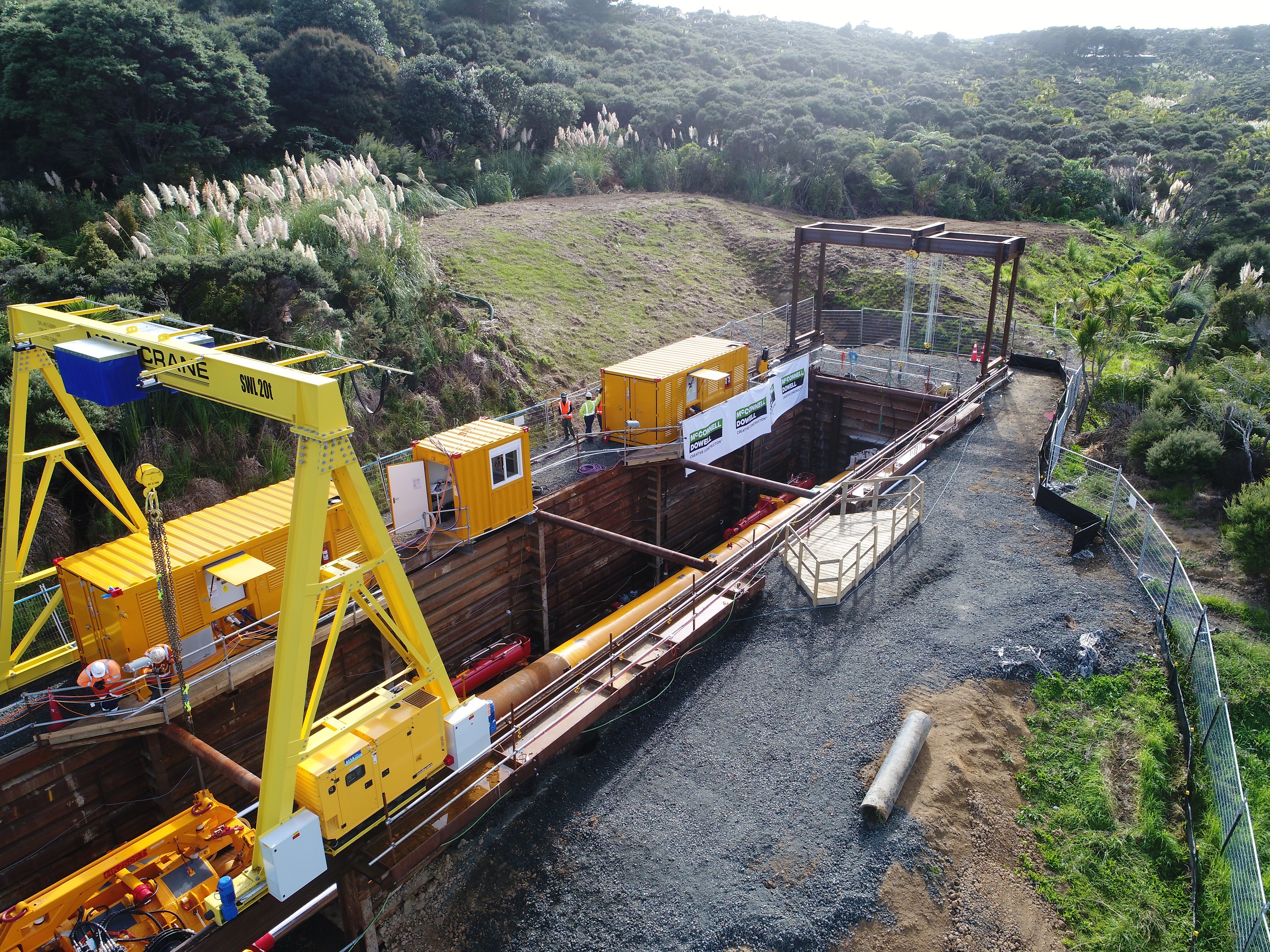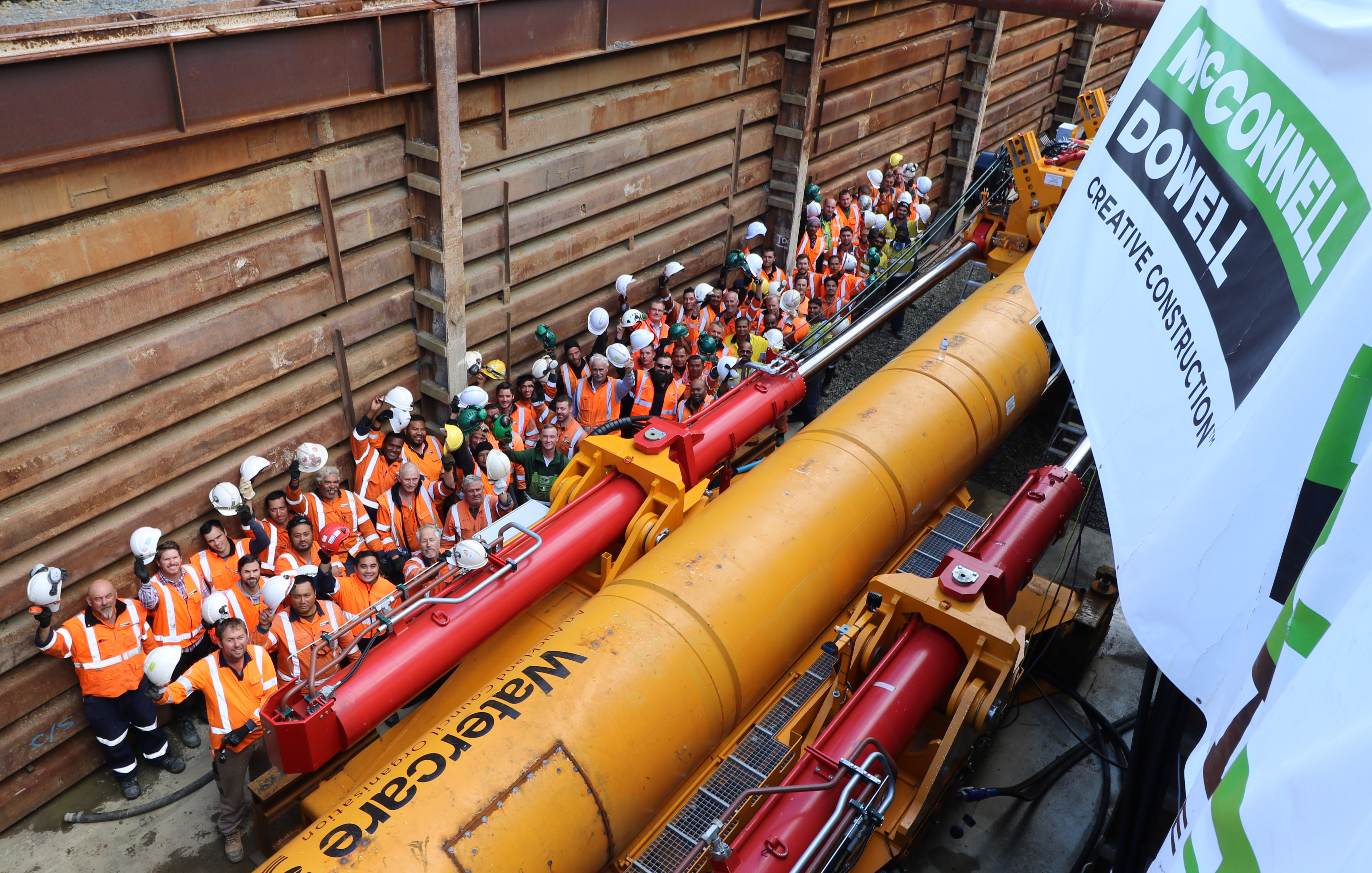September 2018
VMT System Supports World Record Bore in New Zealand
Whilst undertaking the modernisation of a wastewater treatment plant near Auckland, New Zealand a new sea outfall pipeline was required.
After careful consideration of the options available it was decided to utilise the innovative Direct Pipe® technology developed by Herrenknecht AG to install the new outfall over a length of 1,930 meters. The new sea outfall not only increases the treatment plant’s capacity, but also over such a length sets a new distance world record for an installation using the Direct Pipe® technology.
 Just under four months after launch, the site crew for contractor McConnell Dowell in New Zealand’s Whangaparaoa reported the successful breakthrough of ‘Blanche’, the microtunnelling machine used for the Direct Pipe® Drive. Watercare’s Army Bay Wastewater Treatment Plant project, on the Hibiscus Coast near Auckland, will create an additional 2.9 kilometer long sea outfall. The pipeline connects the pump station with the discharge point, about one kilometer off the coast significantly increasing the capacity of the wastewater treatment plant.
Just under four months after launch, the site crew for contractor McConnell Dowell in New Zealand’s Whangaparaoa reported the successful breakthrough of ‘Blanche’, the microtunnelling machine used for the Direct Pipe® Drive. Watercare’s Army Bay Wastewater Treatment Plant project, on the Hibiscus Coast near Auckland, will create an additional 2.9 kilometer long sea outfall. The pipeline connects the pump station with the discharge point, about one kilometer off the coast significantly increasing the capacity of the wastewater treatment plant.
Special attention was given to environmental protection so as not to have an impact on the surrounding recreational and fishing area nor could the local flora and fauna be affected. This fauna includes kiwis, New Zealand’s national symbol, which are under special protection. The Direct Pipe® method is ideal for such sensitive installations.
Herrenknecht’s patented pipeline installation method uses an AVN microtunnelling machine to create the bore. The pipe string is attached to the microtunnelling machine and is simultaneously inserted during the tunnelling process, with the help of a ‘Pipe Thruster’. With pushing power of up to 750 tonnes, it thrusts the pipeline into the ground allowing pipeline installation to take place in one single step. In this way, the environmental impact remains low and the landscape remains intact.
 The bore required not only the world record length but also had to accommodate a 1,262 m minimum radius curve. So, for its part VMT provided the guidance system for the microtunneler comprising a Universal Navigation System (U.N.S.).
The bore required not only the world record length but also had to accommodate a 1,262 m minimum radius curve. So, for its part VMT provided the guidance system for the microtunneler comprising a Universal Navigation System (U.N.S.).
The U.N.S. is available for straight bores up to 400 m or long and/or curved drive. The straight line system uses a laser system allied with the Hydrostatic Water Level (HWL) system to overcome influences in the drive as the bore lengthens.
For the curved New Zealand project the second U.N.S. option was utilised which uses a north-seeking gyrocompass, which when installed in the microtunneller does not need a line of sight to the launch shaft, to calculate the horizontal position of the machine. The vertical deviation of the TBM position from the designed tunnel alignment is calculated using an integrated HWL system.
Overall, the drive went smoothly and on target with the AVN machine being lifted out of the sea at the outfall and towed ashore. The new discharge at Watercare’s Army Bay Wastewater Treatment Plant is scheduled to enter into operation early next year and will equip the facility for future population growth.
